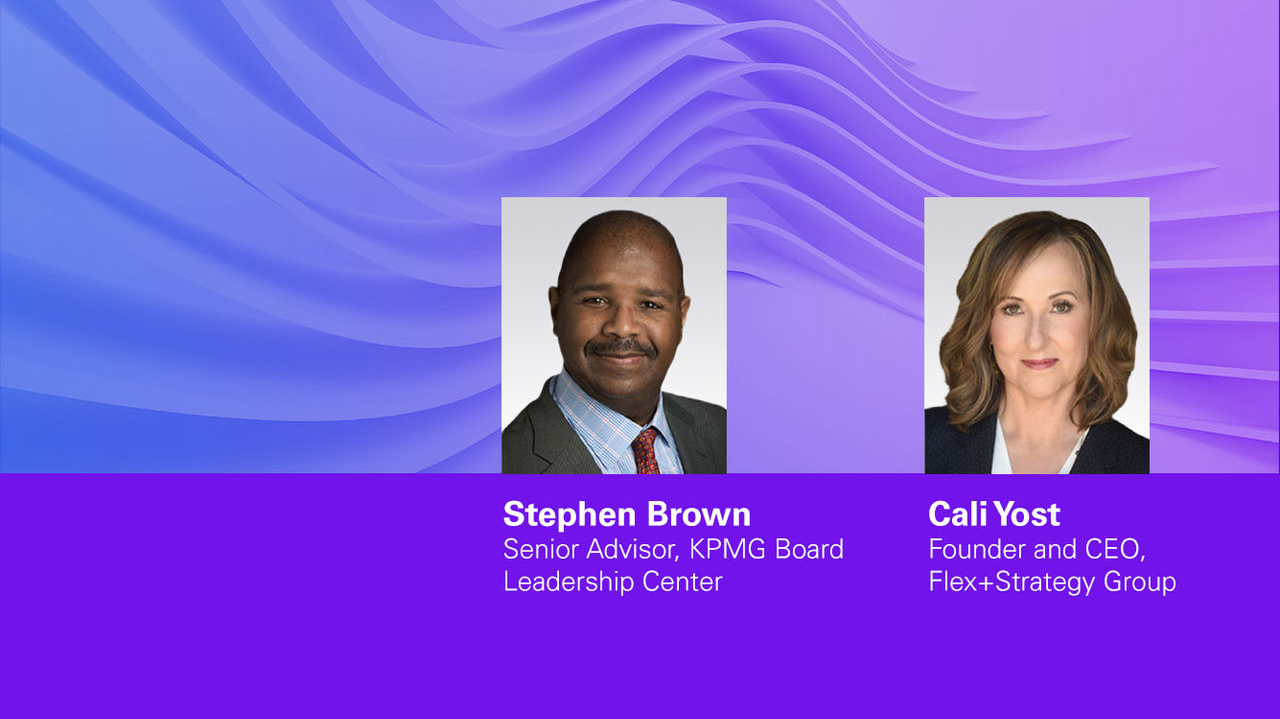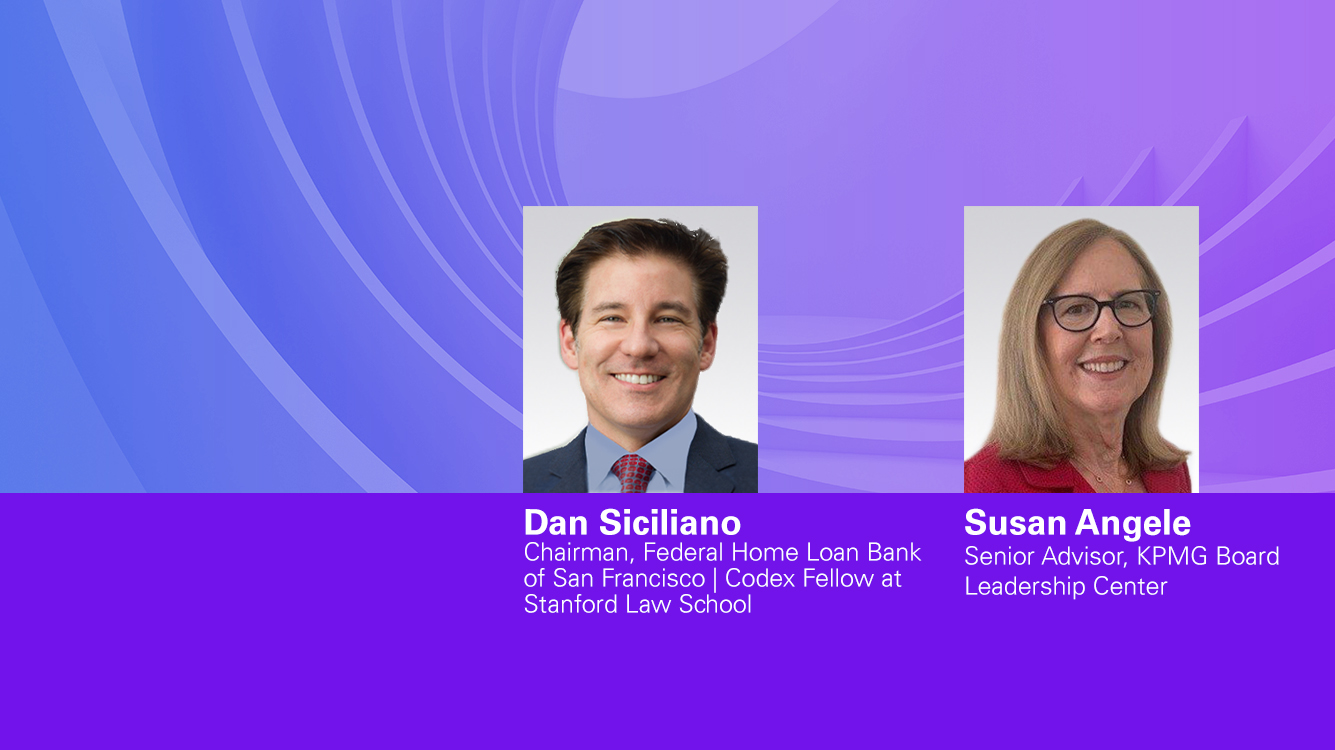Strategy and corporate performance
Insights and developments from a board perspective on strategy and corporate performance.

Featured board insights and programs

On the 2025 compensation committee agenda
Five issues for compensation committees to keep in mind as they consider and carry out their 2025 agendas.
Strategy and Corporate Performance
Explore additional insights
KPMG Board Diversity Disclosure Benchmarking Tool
Track board diversity disclosures using the KPMG Board Diversity Disclosure Benchmarking Tool.
Strategy and Corporate Performance Video Insights
Receive the latest insights from the Board Leadership Center
Sign up to receive Board Leadership Weekly and Directors Quarterly
Explore the latest on these top-of-mind issues facing board directors
Audit Committee
Board Governance
Board Composition and Effectiveness
Compliance and Controls
Cyber Security
Director Essential Resources
Geopolitics and Economics
Lead Director Initiative
Private Companies
Risk Oversight
Shareholder Engagement
Strategy and Corporate Performance
Sustainability
Technology and Innovation




